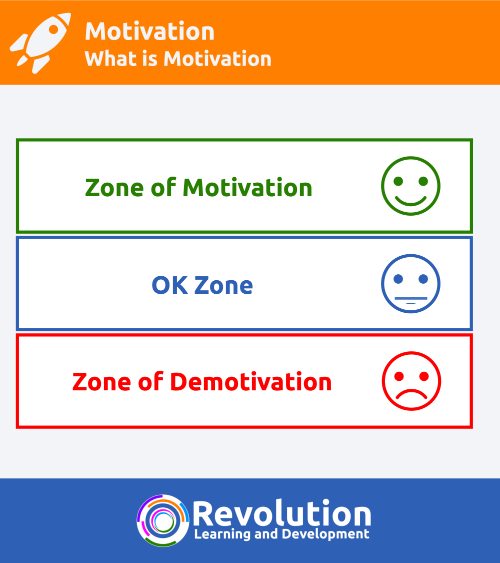Background
What is motivation? The term motivation is used to describe a driving force that causes us to do something. We use the term in the context of being more motivated or motivating someone else. Motivation is often seen as a key leadership and management skill. We also have the responsibility to self-motivate.
In this article, we look at the question of what is motivation to provide a deeper understanding of the above and how to use motivation.
What is Motivation?
To help answer the question of what is motivation, we first must understand where the word motivation comes from. Motivation comes from the word motive (or desire) and describes our needs, wants, interests and drivers.
These are the internal things that help us to achieve the things we want or need to achieve. Motivation is tapping into these things to cause the desire to want to achieve.
Motivation has strong links to attitude, self-belief and mindset in that those with a negative attitude or negative mindset are likely to be generally less motivated.
Self-Motivation
Self-motivation describes the actions that we can take ourselves to increase our own levels of motivation. We all have a responsibility to find our own motivation to get things done and achieve more. We can be guilty of looking to other people for this. Without self-motivation, we are less likely to be successful in anything that we do.
Self-motivation comes from being very self-aware of what we need to drive us. What is important to us and will give us the impetus to move forward towards what we want or need. We should also understand what would have a negative effect on us and hold us back from achieving what we need to achieve.
Motivating Others
When it comes to looking at the question of what is motivation, this is the main reason why people come looking for the answer. How do I motivate others? If you are in a position of leadership and management, one of your areas of responsibility will be to motivate your team to achieve their targets, goals and objectives.
Because everyone is different, there isn’t a one size fits all approach to motivation. Just like self-motivation but in reverse, we need to understand what the drivers are for the individuals in our team and provide that driving force for each of them.
Zones of Motivation
To further help answer the question of what is motivation, we can look at our own and others levels of motivation as being in 3 zones. We call these zones of motivation.

- OK Zone – when someone is in the OK zone, everything about them is just OK. They will hit their goals, targets and objectives but won’t strive to achieve more. Their behaviour and performance will be acceptable but there will be no desire to want to achieve more than is expected.
- Zone of Demotivation – when someone is in the zone of demotivation, their performance and behaviour are likely to be below standard. There is definitely no drive and goals, targets and objectives are less likely to be met. Their attitude will be negative and also their levels of self-confidence and self-belief will be low and their mindset negative too. The longer they stay here, the further into the zone they more and then the harder it is to lift them out.
- Zone of Motivation – when someone is in the zone of motivation, their performance will likely exceed expectations. They will appear positive and driven to achieve more. Their mindset will be healthy and they will demonstrate confidence.
When we think about was is motivation, we want to drive people into the zone of motivation as this is where we think we will get the best performance out of people. This is true, but it should come with a word of caution.
To get into the zone of motivation, we or others have to exert energy to get there. Once we have someone in the zone of motivation we want them to stay there.
But, if we keep pushing people to stay in the zone of motivation, their energy will eventually run out. When this happens, they come crashing down and may find themselves immediately in the zone of demotivation.
This works best when we recognise that a trip into the zone of motivation should be a temporary one. We need to know when we need to get people there and apply the drivers needed on those occasions.
Your main job really is to ensure that we or our team stay in the OK zone and don’t drop into the zone of demotivation. It is much easier to get someone into the zone of motivation from the OK zone than it is from the zone of demotivation.
Motivation Theory and Models
To look further at what is motivation and how to achieve higher levels of motivation, there are a number of theories and models out there to help us understand the subject. Some of the most popular are:
- Maslow’s Hierarchy of Needs
- Hertzberg’s Internal Motivators and Hygiene Factors
- McClelland’s Human Motivation Theory
- Dean Spitzer’s 8 Desires of Motivation
- Max Landsberg’s VICTORY Cycle
Further Learning
If you wish to find out more about motivation, explore the what is motivation question further and develop your own motivational skills, you may find a motivational skills training course will help. Take a look at our Motivational Skills Training Course for more details.





